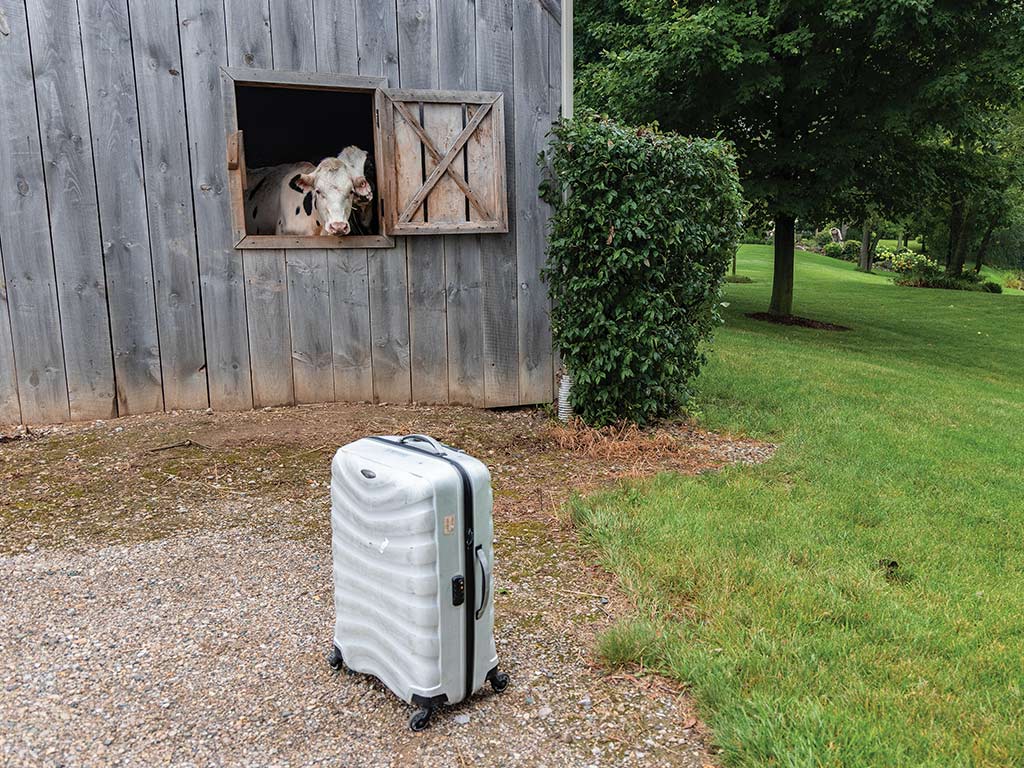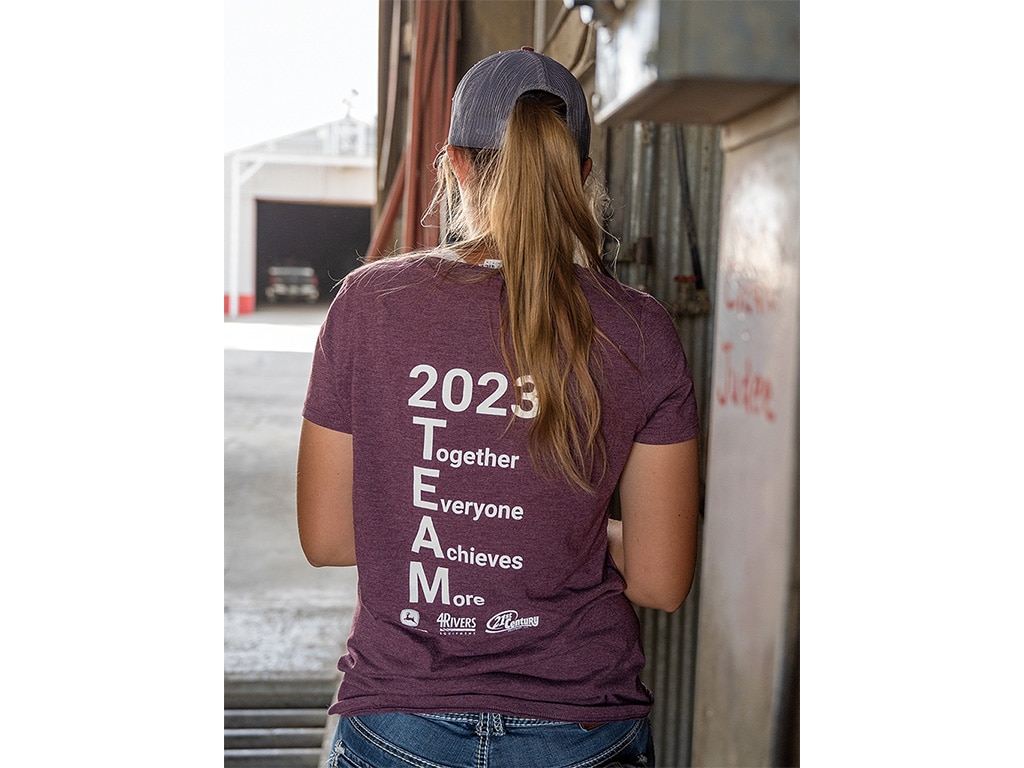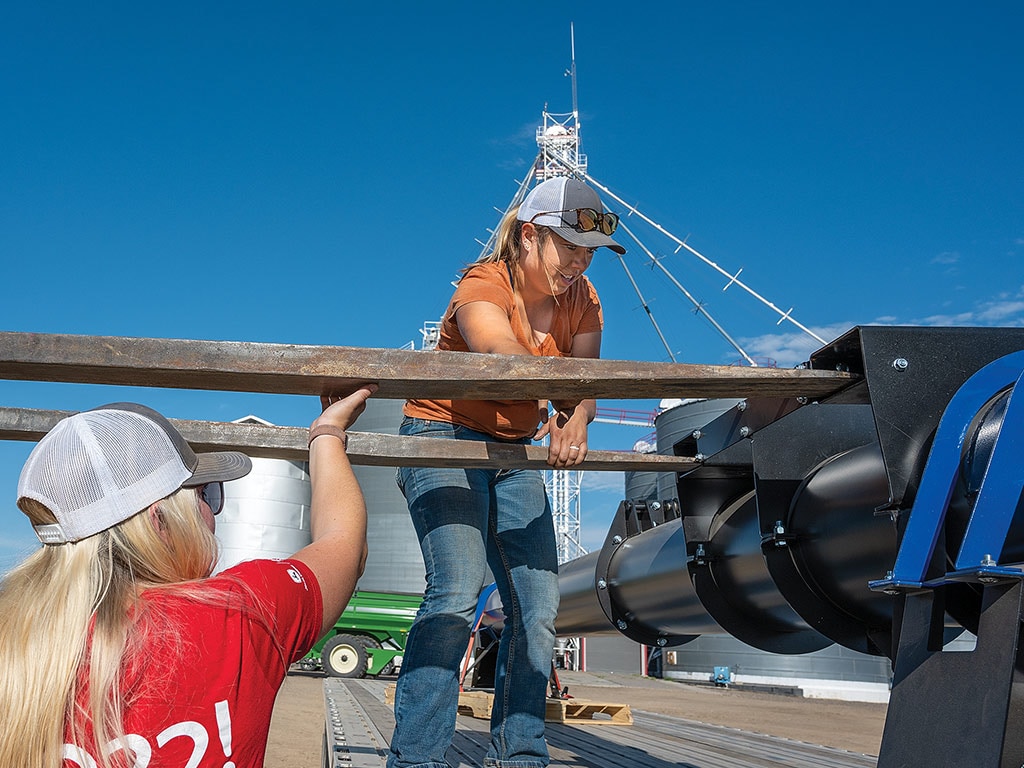Agriculture, Farm Operation January 01, 2024
Cultivated Legacy
.
Big business thinking sets up smooth farm transitions from 4th to 5th generation and beyond.
Kent Kalcevic listens without interruption as his daughter, 25-year-old Tabor Kalcevic-Erker, explains how the new high-compression seed treatment system they just unloaded will benefit the farm.
It's the first big capital expenditure she researched and proposed to the Kalcevic Farms board. "It's exciting. I had to show initiative, put the work in, and take action," she says.
Across the Bennett, Colo., farm yard her second cousin, Bronwyn Kalcevic, makes repairs to the grain elevator. "I've been working in the elevator since I was 14," says Bronwyn, 23, a kindergarten teacher when not on the farm.
Tabor's sister Asia, 22, steps over from the scale house. Together they laugh through a photo shoot and discuss tasks as they impatiently wait for conditions to be right to start harvest of the best wheat crop seen in years.
Each woman is part of the family farm today, but their level of future involvement will be determined by action, not name.
The dynamic is novel. Instead of a solitary line of succession, this farm family tree keeps branching. At one time they were three brothers and three sons. Today, Kalcevic Farms is two cousins, Kent and Jeff, and their children—five second cousins.
Having the name isn't a shoo-in. In 1952, the girls' great grandfather said, 'Whoever stays on the farm, gets the farm.'
Today the Kalcevics take the concept a step further to include dedication, intent, and, eventually, financial skin in the game.
"We've defined four pathways with allowances for slight deviation for family members to reach the stakeholder level," Kent says.
A person can just keep working in their job and drawing a salary, never reaching the level where they make the big decisions or invest their own money.
If they display passion, knowledge, and initiative, they can access the path to a higher level of involvement. "They can't just buy in. They have to be vested, like a 401K," says Danell, Kent's wife.
Those paths are for all, no matter age or generation. "We used to be generationally partnered," Jeff says. "Now we're family partnered. We're stronger together."
Above. From fun harvest t-shirts to dinner together in the field, the Kalcevics are adamant about keeping the farm a family despite its business structure. The family includes many that don't share the name. Asia (L) and Tabor unload new equipment Tabor researched and proposed. Opportunities to show such initiative are part of Kalcevic Farms business model and serve to ID future stakeholders.
Silos. Since its 1898 start, the farm has seen many partnership arrangements as it transitioned.
In 2008, a family member opting to separate from the group triggered another restructure.
This time, they created a system of business silos operating under the Kalcevic Farms umbrella. There are now 27 businesses including land, trucking, operational, and marketing companies for crops including wheat, corn, milo, millet, and soybeans.
Each runs individually. Operating businesses lease land from the land companies. Marketing entities buy grain from the operational companies, and so on.
In 2014, they went a step further. They 'fired' everyone, created defined positions, and hired family and managers back in the new roles in each business.
Each company is managed as a stand-alone entity. Family and employees alike draw wages and earn benefits. The companies and the umbrella of Kalcevic Farms are managed by a board.
Board meetings with stakeholders and upper management are held 10 times per year. Decisions are made on management practices, capital investments, and more with minutes kept.
"We have minutes from every board meeting since 1952," Danell says. "It's easy to settle disagreements when there's a record of what we agreed to."
The silos approach protects the farm as a whole from death, divorce, drought, disability...the big Ds. More critically, the business structure lets those that want to stay know exactly where they stand and how to move forward. That includes Kent, Danell and Jeff. They are defining paths leading to eventual retirement.
Everyone also has a voice.
"The board makes final decisions, but we encourage everyone to challenge the board and our thought process," Kent says. The greatest hurdle of being great is being good. Reaching great takes input from everyone, he says. ‡
Read More

AGRICULTURE, SPECIALTY/NICHE
Eat. Shop. Stay.
Norfolk County, Ontario farms band together to build an ag tourism draw.

AGRICULTURE, SUSTAINABILITY
A Sweet Spot
Wyoming farmers work together to keep mortgage-making sugar beets in their rotation.



